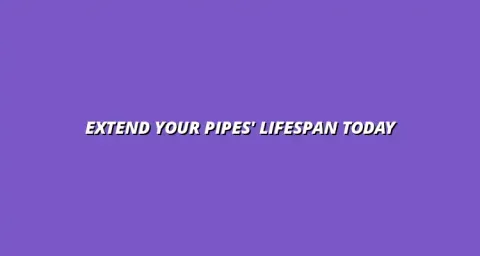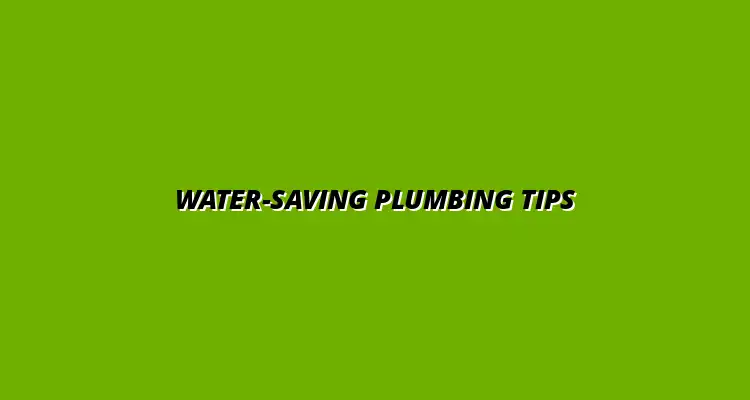
- Beginner Tips
- Jan 22
2024-12-26
Water is a precious resource, and understanding its importance is vital for both our wallets and the environment. Every time we waste water, we not only impact our monthly bills but also contribute to broader ecological issues. That's why learning about water conservation can help us make smarter choices, ultimately benefiting our pockets and the planet!
Conserving water is not just an individual responsibility; it's a collective one. By working together to reduce water usage, we can lessen the strain on our natural waterways, helping to ensure that future generations have access to clean and abundant water supplies. Let's dive deeper into the impact of water waste! Understanding plumbing systems can also help you better understand how to conserve water.
When we waste water, it directly reflects on our bills. Many people don’t realize that even small leaks can run up costs significantly over time. By addressing these issues, we can keep our expenses in check while also conserving this essential resource.
Here are some key factors to consider regarding water waste and monthly expenses:
Poor plumbing choices may haunt your wallet! From outdated pipes to inefficient fixtures, the decisions we make can lead to unnecessary water waste. If you’re using older plumbing systems, you might be paying more than you realize. A good understanding of residential plumbing systems is essential for efficient water use.
Consider the following when evaluating your plumbing:
Excessive water use can have serious environmental consequences, impacting rivers, lakes, and even our climate. When we use water wastefully, it puts pressure on ecosystems, threatening wildlife and natural habitats. The ripple effect can be devastating! Learn more about plumbing's role in water conservation.
Here are some environmental issues caused by excessive water use:
Now that we understand why water conservation is important, let’s explore some practical plumbing tips to help you save water. Implementing these tips can lead to significant reductions in your water usage and bills. Plus, they are often easy to carry out!
From fixing leaks to choosing the right fixtures, every small step you take can contribute to a larger change. Let’s look at some effective strategies to reduce water consumption in your home. For example, maintaining good drainage is crucial; check out these simple tips for better drainage.
Identifying and fixing plumbing leaks is a crucial part of water conservation. Even tiny leaks can lead to big waste over time! It’s essential to know where to look and what signs to watch for.
Here are some common leak sources and their signs:
While leaks can occur anywhere in your plumbing, some areas are more prone to issues. Knowing these common leak sources helps you catch problems early. Regular inspections can save you money and water!
Look out for these telltale signs:
Repairing minor leaks can often be done as a DIY project! Simple steps can prevent wasting water and save money in the long run. Here’s how you can tackle these leaks:
Making efficient choices with your fixtures and appliances can lead to significant water savings! Upgrading to water-efficient models not only conserves water but can also lower your utility bills. It's a win-win!
Here are some tips for choosing water-efficient options:
Toilets and showerheads are major users of water in a home, so choosing wisely is essential. Water-efficient models can greatly reduce water use without sacrificing performance. Your choices matter!
Here’s what to look for:
Finally, let's not forget about our washing machines and dishwashers! These appliances can consume a lot of water, but using them efficiently can make a big difference. Keeping your kitchen drain line clean is also important. Here's how: Cleaning your kitchen drain line.
Seasonal changes can provide unique opportunities for water savings! By adjusting our plumbing practices according to the season, we can minimize waste during high-demand periods. These practices can be quite simple but effective!
Let’s explore some seasonal tips to save water. Extending the lifespan of your water heater is another key aspect of water conservation; see tips to extend your water heater's lifespan here.
Winter can be tough on plumbing systems! Cold temperatures can lead to frozen pipes, which may burst and cause significant waste. Here’s how to prepare your plumbing:
During summer, watering plants can increase water usage dramatically. Implementing smart watering practices can help conserve water while keeping your garden healthy. Here are some great tips:
As we move toward more sustainable living, many homeowners have questions about how to tackle plumbing issues and save water effectively. Understanding these common concerns can help us make informed decisions when it comes to our plumbing and water usage. Whether it's learning how to identify leaks or understanding the benefits of low-flow fixtures, being well-informed is key!
Let’s dive into some of the most frequently asked questions about plumbing and water conservation. By addressing these topics, I hope to empower you to take action that not only benefits your wallet but also helps the environment! If you need a plumber in Birmingham, consider checking out this resource.
Detecting a leak in your plumbing system can save you from hefty water bills and damage to your home. There are several visual indicators that can help you identify if something is amiss. Common signs include damp spots on walls or ceilings, water stains, or mold growth.
Other signs to look out for include unexpectedly high water bills or the sound of running water when no fixtures are in use. Understanding these indicators can prompt you to act quickly before the situation worsens!
Sometimes, leaks can be subtle and hard to detect. In addition to the signs mentioned, look for the following visual indicators:
Taking the time to inspect these areas can help you catch leaks early, saving both water and money!
When it comes to fixing leaks, you may wonder whether to call a professional or tackle it yourself. DIY solutions can be effective for minor leaks, especially when you have clear indicators. However, more complex issues may require professional help to ensure proper repairs.
Consider the following factors when deciding:
Ultimately, it’s about what you feel confident handling versus when to call in an expert!
Switching to low-flow fixtures can significantly decrease your water usage without sacrificing performance. These fixtures are designed to use less water while still providing a strong flow. This means you can enjoy your daily routines while conserving precious resources.
One of the biggest benefits of low-flow fixtures is the financial savings over time! By using less water, your monthly bills can decrease, allowing you to allocate those savings elsewhere.
Investing in low-flow options may have an upfront cost, but the long-term savings can be substantial! For example, replacing an old toilet with a low-flow model can save you thousands of gallons of water each year.
Here are a few ways low-flow fixtures can save you money:
Beyond just the financial perks, low-flow fixtures also contribute to our environmental goals. By using less water, we help preserve natural resources and reduce the strain on local water supplies. This adds to a collective effort to combat drought and promote sustainable living practices!
Low-flow fixtures can play a vital role in achieving your personal water conservation goals and making a difference for the planet!
Implementing effective water conservation practices starts with a solid plan. Taking small, actionable steps can lead to significant results over time! By creating a water conservation plan for your home, you can tailor your efforts to meet specific needs and goals.
Let’s explore some practical steps that can kickstart your journey toward a more sustainable household!
Creating a plan is essential for seeing real results in water conservation. Start by assessing your current water usage and identifying areas for improvement. Setting realistic goals can help keep you motivated along the way!
Consider the following steps when drafting your plan:
When it comes to setting goals for water reduction, it's important to be practical! Start with achievable targets that can gradually lead to more significant changes. For example, you might aim to reduce your water usage by 10% over the next six months.
Here are some other examples of goals you could set:
Once you have your goals set, tracking your progress is essential to ensure you stay on track. Regularly monitor your water bill and evaluate whether your efforts are yielding results. If you notice little change, consider revising your approach!
Keep a record of your water usage and savings to maintain motivation. Here are some ways to track your progress:
As you embark on your water-saving journey, it’s helpful to have access to various resources and services. Many local plumbing companies specialize in water efficiency and can provide valuable insights and support!
Additionally, numerous online tools and guides are available to help you monitor your water usage and explore further learning opportunities. Let’s take a look at some of these resources!
Finding a reputable plumbing service that focuses on water efficiency can be a game-changer. These experts can assess your home and provide tailored recommendations for reducing water use. Here’s how to find them:
Various online tools can help you keep track of your water usage and educate you on best practices. These resources can make it easier for you to stay informed and committed to your conservation goals! Some great options include:
By utilizing these resources, you can enhance your understanding of water conservation and make informed choices for your home!
